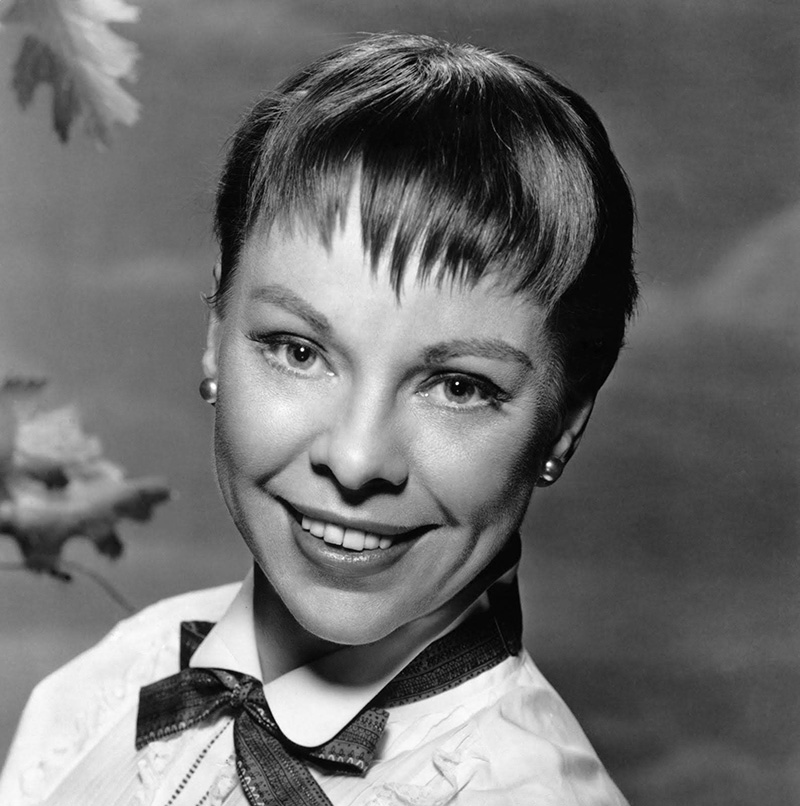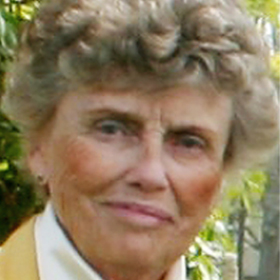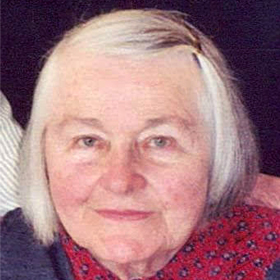President Franklin Delano Roosevelt appointed Mary Brackett Hoyt Ransom (1884-1971) as Mattapoisett’s first woman U.S. Postmaster, a position she held from 1934 until 1942. Active in the community and in Democratic politics, Mary was a member of the Mattapoisett Improvement Association, the Mattapoisett School Committee, and the Democratic Women’s Club of New Bedford.
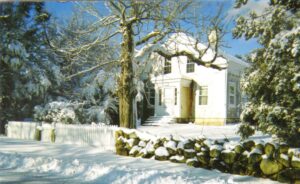
Mary Brackett Hoyt Ransom (1884-1971), the fourth of nine children born to Jackson and Mary Hoyt of Newington, New Hampshire, grew up in a large farm family. Civic minded, church going, progressive Democrats, the Hoyts were part and parcel of their rural community. Mary’s father, an uncle and two of her brothers served as Newington’s Representatives in the New Hampshire legislature. With a population of just over 600, Newington was too small to offer its own public schools from seventh grade on, so Mary graduated from nearby Portsmouth High School in 1903 and enrolled in its one-year post graduate teacher training program. An elementary school teacher in Derry, New Hampshire from 1904 to 1906, she earned a promotion to be the teacher in charge of several grades there. She transferred to the Newington school system for the 1906-1907 school year, and would have continued but for the marriage bar, a rule that prohibited married women from teaching on the grounds that their husbands were considered the family bread winners. In the spring of 1907, Mary agreed to marry Everett S. Ransom, the chief engineer on the private yacht Parthenia owned by Harry E. Converse.
The wedding of Mary and Everett, held in Newington at the home of her uncles, Tom and Jim Pickering, took place on October 30, 1907. The Ransoms honeymooned in New York City and eventually moved to Mattapoisett into Silvercroft, the home that Mary named for the two silver leaf maple trees in its east yard. On Pine Island Road, Silvercroft would be her residence for all but a few short periods for the rest of her life. Three daughters attended grade school in Mattapoisett and then went on to high school in the nearby town of Fairhaven. In 1912, Mary wrote the lyrics for the romantic ballad “Won’t You Be My Cuddle, Cuddle Girl?” She also wrote poems, another popular song “Violet Time,” and letters to the editor in several newspapers. Even with a young family, Mary continued to find time for writing, a practice she continued throughout her life. Conveniently, the Converse yacht Parthenia, on which Everett served as chief engineer from 1905 to 1917, was berthed just a few miles from Mattapoisett at Converse Point in Marion, MA, the home of Mary Parker Converse and the Converse family.
Mary took an active role in community affairs and in Democratic Party politics during the 1920s. In 1920, at age 35, her lifelong friendship with Mattapoisett summer resident Huybertie Hamlin took root. That year, Mary wrote to Huybertie to request three “Support the League of Nations” buttons. Huybertie replied, “I am indeed glad to send you these buttons.” She went on to ask Mary if it would be “possible to get women together here to talk and answer questions about the League.” Thus began their friendship and collaboration, a bond that would continue into the 1960s. Mary and Huybertie worked together on Mattapoisett betterment for years on the Mattapoisett Improvement Association. As committed Democrats, they kept close tabs on what was going on in Mattapoisett and in the world and did more than their share to nudge their community in what they saw as the right direction. Mary also became a member of the Mattapoisett School Committee in 1924 and served as its secretary for 12 years (1924-1936). She was a founder of the town’s League of Women Voters chapter and the corresponding secretary of the Democratic Women’s Club of New Bedford.
In 1926, Franklin Delano Roosevelt accepted Huybertie’s invitation to address the annual meeting of the Mattapoisett Improvement Association. Roosevelt, afflicted by polio, had to be helped on stage. At that event, Mary introduced herself to the future president after his speech and told him “I am still hoping to vote for you for president someday.” He demurred, saying, “You never will, our people are a hero worshipping people. They want a man who is physically fit.” To which Mary responded, “You still have a wonderful mind.” Her vision became reality when Roosevelt was elected president in November 1932, to the first of four terms.
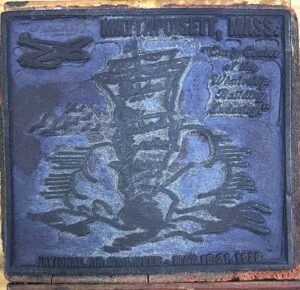
In 1934, with President Franklin Delano Roosevelt’s nomination and Senate approval, Mary was appointed Postmaster of Mattapoisett, the town’s first woman to hold that office, a position she held until 1942. Mary took satisfaction and pride in the job and worked hard to provide good service. Her work won praise from summer residents who benefited from the care she took to make sure they received important mail. To celebrate the 20th anniversary of air mail service, Mary created the Mattapoisett cachet, a stamped design added as decoration to mail. She exchanged copies of the cachet with other post offices around the country and displayed them in the front windows of the office. The rubber stamp created with the cachet’s design has been donated to the Mattapoisett Historical Society. In a letter written after her service at the post office, Mary stated, “Having always loved to serve, I shall never forget the first morning I began work. I was filled with the greatest delight that I was at last in a place where I could actually wait on people to my heart’s content.” For her first three years as postmaster, she may have been the family’s primary breadwinner, as her husband’s work records list no employment as a marine engineer from 1930 to June 1937. She looked back fondly on her days in the post office and the degree of financial independence the job provided.
Mary’s home front activities during World War II included following the progress of the war on her radio and corresponding with Massachusetts Navy Sailor P. J. Medler. She sent Medler The Boston Globe and wrote to him regularly as part of her contribution to the war effort. He was a wartime pen pal, not a family member or acquaintance. Two daughters returned to their Mattapoisett family home from their wartime service, Dorothy with the telephone company and Georgia with the Civil Air Patrol. Out of the work world by the end of World War II, Mary had both the time and the inclination to attend to her roles as informed citizen and committed New Deal Democrat. Letters from her showed up at the White House, Congress, the Pentagon, the Democratic National Committee, Adlai Stevenson’s campaign headquarters, and the Massachusetts State House. The responses to her letters that she saved from this period reflect the depth and variety of her concerns, her understanding of issues that were facing the nation, and her unflagging support for those she championed.
Mary and Everett celebrated their Golden Wedding Anniversary in 1957. The photograph taken of them that day reflects the couple’s politics. Everett holds a letter of congratulations from President Eisenhower, Mary a note from John F. Kennedy.
David R. Anderson, grandson of Mary B. H. Ransom
edited by Ann O’Leary, Emily Bourne Research Fellow
Excerpted from
-
Anderson, David R. “Mary Ransom: Making Her Way, Farm Girl Becomes a Woman of Consequence.” In Mary Brackett Hoyt Ransom Papers, ca.1890-2020. MC 1104. Schlesinger Library, Radcliffe Institute, Harvard University. https://hollisarchives.lib.harvard.edu/repositories/8/resources/11275.
![[Mary B. H. Ransom], Photograph, Source: David R. Anderson, Courtesy: David R. Anderson Black and white photograph of Mary B. H. Ransom](https://historicwomensouthcoast.org/wp-content/uploads/2023/10/Mary-B.-H.-Ransom.jpg)


